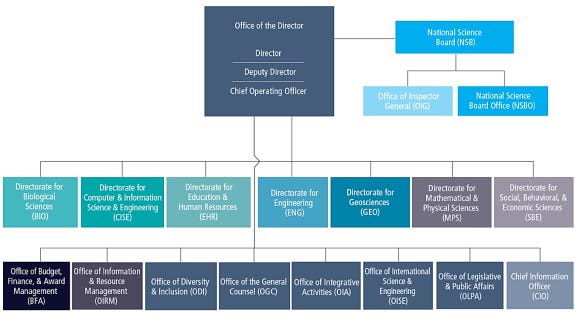If you’ve ever attended a coastal restoration meeting, supported a STEM education program, or read about a new flood monitoring system in your parish, there’s a good chance the National Science Foundation (NSF) helped make it possible. Quietly, steadily, and often behind the scenes, NSF funding has helped power some of the most impactful research and community engagement projects in Louisiana.
From large universities like LSU and Tulane to local nonprofits and community-based projects, NSF has played a foundational role in preparing Louisiana for a changing climate, educating its young people, and strengthening its scientific infrastructure. With sweeping changes proposed at the federal level that could dramatically reduce NSF's footprint, it’s worth pausing to reflect on just how much this support has enabled—and why it matters so deeply.
A National Engine with Local Impact
Created by Congress in 1950, the NSF funds about a quarter of all federally supported research conducted at U.S. colleges and universities. Unlike mission-specific agencies like NASA or the NIH, NSF funds a wide array of scientific fields, from biology and engineering to social sciences and education.
In Louisiana, NSF dollars have made their way into every corner of the state. In 2023 alone, the foundation invested over $50 million in Louisiana-based research, training, and education. These funds support everything from environmental modeling and flood mitigation strategies to K-12 curriculum development and workforce training in the energy and water sectors.
The NSF-backed LA-NEXT program, for example, is building new pipelines between schools, universities, and industries to strengthen the state’s STEM workforce. At LSU, the FUEL Project is exploring sustainable energy solutions with long-term economic benefits for the Gulf South. At a more grassroots level, programs like CITE (Communities Investigating Their Environment) are helping residents monitor and respond to chronic flooding with the support of scientists and cultural practitioners.
The Structure That Makes It Work
One of the reasons NSF funding is so trusted is because of how it’s allocated. Proposals from researchers go through a rigorous merit-review process managed by NSF Program Officers—experts in the field who coordinate reviews by independent scientists. Those reviews focus not just on scientific merit, but also on broader impacts: how the work benefits society.
Once reviewed, funding recommendations are sent to Division Directors, who make final decisions for most grants. These directors, typically career scientists themselves, ensure consistency, fairness, and programmatic alignment.
This multi-layered structure helps ensure that funding decisions are based on the quality of the research—not politics, personal relationships, or external pressures. It’s a system that researchers in Louisiana and across the country trust.
What’s Changing, and Why It Matters
In May 2025, the federal government proposed a major overhaul of the NSF’s internal structure, including the elimination of all 37 research divisions and a 50% reduction in staff. Already, over 1,400 grants have been frozen or terminated, and indirect cost reimbursement for institutions has been capped at 15%.
For researchers, educators, and community partners in Louisiana, these changes are more than administrative. They mean uncertainty in funding pipelines, the loss of institutional relationships, and the potential unraveling of long-term projects.
What’s especially at risk are programs that operate at the crossroads of science and community. Projects like CITE, which bring local residents and scientists together to co-produce knowledge about flooding, are built on trust and continuity. Disrupting that continuity doesn’t just delay a project—it can dissolve the very partnerships that make it meaningful.
A Record of Quiet Wins
Despite the national headlines, most NSF-funded work doesn’t make the front page. It happens in classrooms, wetlands, research labs, and community centers. It results in better hurricane models, more resilient infrastructure, and students who go on to become engineers, ecologists, and data scientists.
It’s the kind of slow, steady progress that doesn't always grab attention, but when you take it away, the consequences are hard to ignore.
Louisiana has become a national leader in community-based environmental science in part because of consistent NSF support. That investment has helped create a more informed public, a more prepared coastline, and a generation of young people with the skills to meet the challenges ahead.
A Crossroads Moment
The good news is that none of this is inevitable. While some aspects of the proposed restructuring have already gone into effect, others are being contested in court. Major universities and scientific organizations are pushing back. And public awareness is growing.
This is a moment to remember how public science works when it’s at its best: rooted in communities, reviewed by peers, and guided by a commitment to the common good.
In Louisiana, we know that resilience isn’t something you build overnight. It takes partnership, planning, and a long-term view. The same is true for science. We need institutions like the NSF to remain strong, transparent, and well-funded—because the work they enable is far too important to let slip away.
Let’s not lose the progress we’ve made. Let’s protect it, build on it, and keep working together for a safer, smarter, and more resilient future for Louisiana and beyond.







Thanks so much for your post about the National Science Foundation. I have enjoyed interacting with the agency, in many capacities, my entire career. I do hope the Congress will restore NSF's funding. The grant they award are good for the economy!